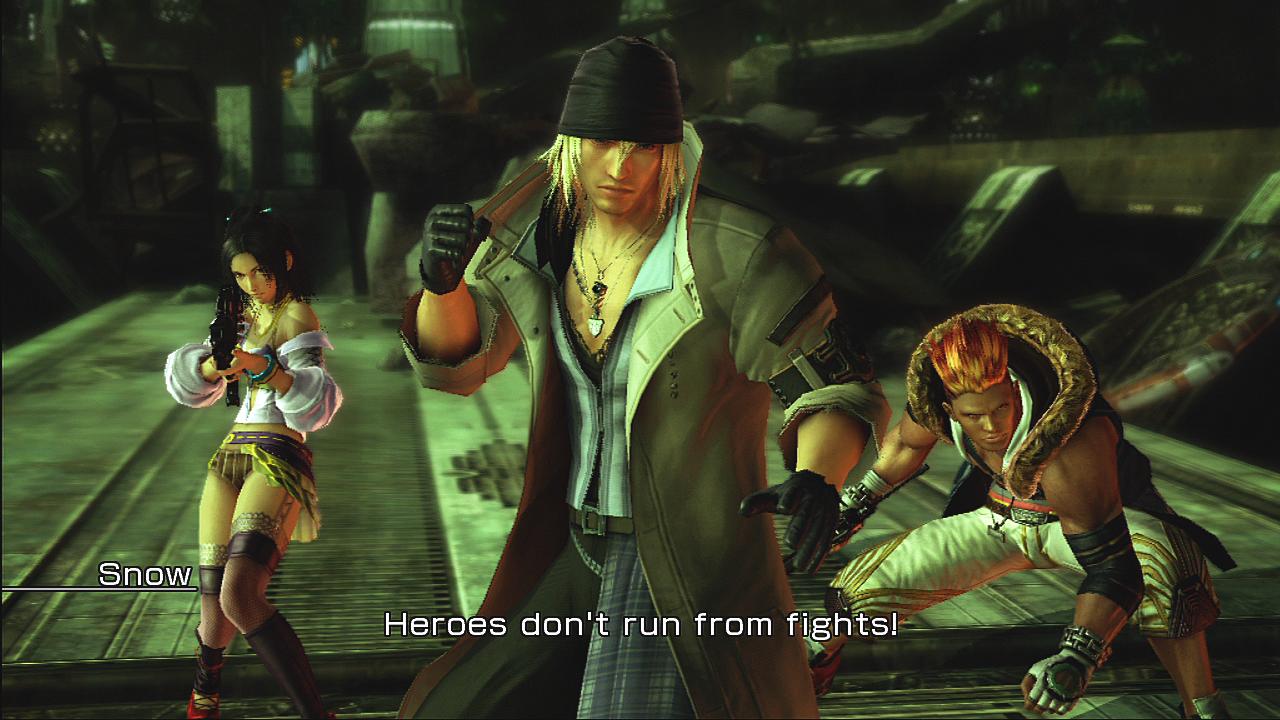GamesRadar+ Verdict
Pros
- +
Focused
- +
streamlined action; no BS filler
- +
Prettiest console graphics OF ALL TIME
- +
Lots to explore on Pulse
Cons
- -
Summons are kind of weak
- -
Lightning is a boring character
- -
First half may be too linear for some
Why you can trust GamesRadar+
It's hard to talk about Final Fantasy XIII without getting into a debate about what an RPG should or shouldn't be. With a series as beloved and long-running as Final Fantasy, combined with its history of reinventing itself (or at the very least, changing things up) with every major entry, it's understandable that a lot of nervous hopes ride on the first FF of the current gen. We all have our favorite game in the series (which we'd practically go to the death defending), so it makes sense that fan expectations for FFXIII vary widely too.
So it follows then, that since the Japanese release, fan reaction to certain aspects of FFXIII has been mixed. If you're reading this, you've probably already skimmed through many a kneejerk reaction forum post of rage that made you anxious to see the reality of the final product for yourself. So let's get rightto it.
Yes, the first 25 hours of the game are totally linear
This is the main point that causing some otherwise sane people to lose their freaking gourds.
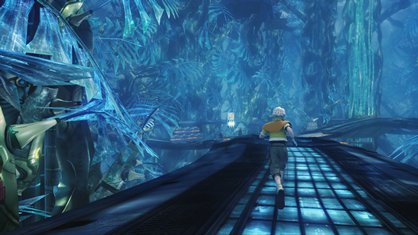
At the very beginning (the first few hours), we're talking 2D side-scroller levels of linearity. Walk forward, fight some dudes. Walk forward a few more steps and fight some more dudes. Thepath might curve a bit from time to time and have little offshoots that contain treasure chests, but that's the extent of it.
But listen, it's awesome – really! There's no need to fall into a pit of despair and fanboy rage just yet (unless you're an utterly unreasonable person, then by all means go ahead).
The Final Fantasy series has never truly given the player freedom in a role-playing sense, and every major plot point in each Final Fantasy story (FFXI excepted, obviously) has been 100% fixed. FFXIII simply takes it a step further, streamlining the formula into a more controlled, more focused experience (and in the end it's not wildly different than the structure of Final Fantasy X).
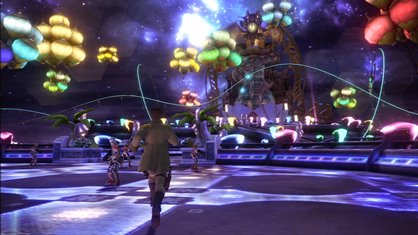
The upside to this structure is that the pacing is fantastic – from the first moments of the opening sequence, you really feel swept up in the story and action in a way that's completely unprecedented in a JRPG. There's no lengthy, tedious, expository opening cutscene where you watch the characters from afar and wait for the actual game to start. Instead, you're right there with Lightning and Sazh in the thick of the action as they throw themselves desperately into an us-against-world fight to survive.
The downside is that any pretense of freedom (i.e. the ability to diddle around exchanging pleasantries with NPCs and walking into strangers' houses) is completely gone. But considering that our protagonists are outlaws fighting for their lives against an all-powerful corrupt government, it makes perfect sense that they'd make a beeline for safety rather than leisurely exploring.
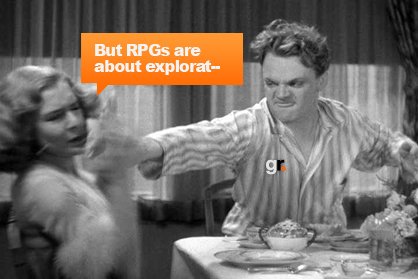
And other thing – FFXIII's controlled structure makes it such that no suspension of disbelief is needed for the sake of the gameplay. As in, absolutely everything you do makes sense in the context of the story. It makes sense that the first half of the game would be fairly linear – after all, you're inside a relatively tiny, hollowed-out moon-like satellite called Cocoon, which like its name suggests, fairly cozily houses its inhabitants. Wide-open spaces simply wouldn't fit.
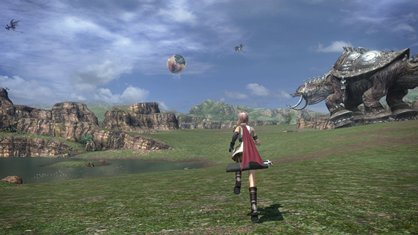
Above: Cocoon hangs low in the sky, almost always visible on Pulse (also check out that huge Adamantoise)
Furthermore, Cocoon's cramped interior makes it all the more impactful when you do venture down to Gran Pulse, the lush green planet below. Where Cocoon was claustrophobic and linear, Pulse's Archylte Steppe is wide open, with more than enough area to explore.
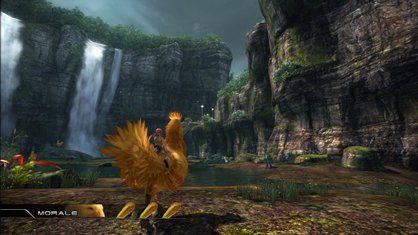
Above: Don't worry, Chocobos are plentiful
So where are the towns?!
It's not so much that FFXIII doesn't have towns, but rather it doesn't have the usual JRPG structure of town-dungeon-town-dungeon-boss repeat. Oh, there are towns in FFXIII, the beautiful beach town of Bodhum and the abandoned, overgrown Oerba for example, but they're not RPG towns as such.
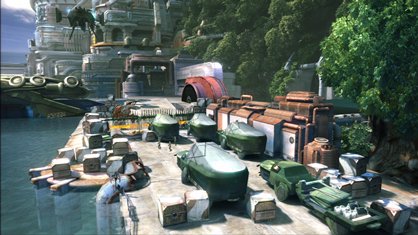
Not entirely dissimilar to real life, RPG towns have a threefold purpose: to provide respite from the dangerous outer world, to hide the NPC that will help progress your quest, and to provide various retail establishments for your shopping needs. The first two functions are made obsolete by the structure of the game.
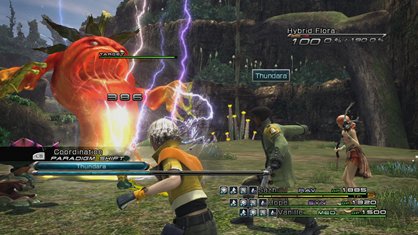
Above: There are no random encounters, so you can avoid enemies whenever you'd like to avoid battle fatigue
FFXIII takes care of the last necessity by providing a wide selection of virtual shops available at every save point (which are mercifully plentiful, by the way). Virtual shops were a welcome change in Crisis Core, and again in FFXIII provide a streamlined, functional, time-saving solution.
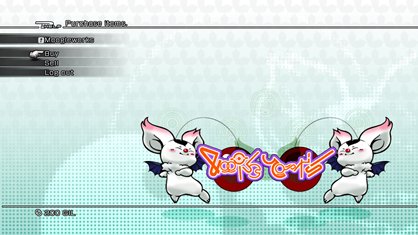
And it's not like the shops are bland despite being reduced to menus – far from it. The shop menus (like all of FFXIII's menus) are lovely. Each shop has its own sounds, logos, and even punchy, consumerism-celebratory flavor text to describe each retailer ("At Unicorn Mart, your health is our business. Our expert pharmacists are standing by, day and night, to send you whatever you need, wherever you need it…")
Still miss those towns?
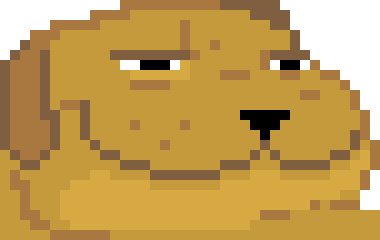
More info
| Genre | Role Playing |
| UK censor rating | "16+","16+" |
| Franchise name | Final Fantasy |
| US censor rating | "Teen","Teen" |
| Platform | "Xbox 360","PS3" |
| Alternative names | "Final Fantasy 13","FFXIII","FF13" |
| UK franchise name | Final Fantasy |
| Description | The streamlined, focused structure eliminates potential tedium without dumbing anything down, and the battle system strikes an elegant balance between strategy and fast-paced action. Stunningly beautiful graphics and a pervasively meticulous level of polish throughout only add to the experience. |
| Release date | 1 January 1970 (US), 1 January 1970 (UK) |

